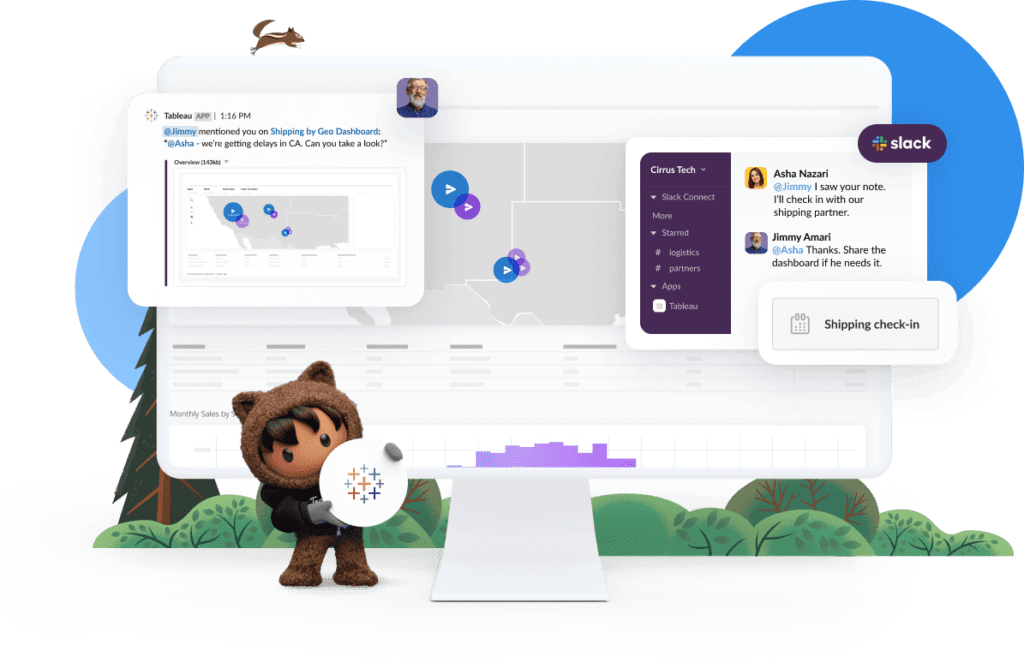Transforming Sales Operations with HubSpot migration to Salesforce
Industry
Advertising
&
Marketing
Project Duration
3 Months
Users
250
Products Used
Sales Cloud
CPQ Plus
Overview Of HubSpot Migration Services
An expanding technology firm was struggling with isolation between its sales and marketing operations. Each team used a distinct type of data management software. The sales team managed their data through Salesforce, while the marketing team relied on HubSpot to handle customer data.
The Firm’s Problem
Reliance on two different software systems led to redundant and inefficient practices. This slowed the growth of the company and ultimately did a disservice to both the customers and employees.
The Firm’s Decision
In order to streamline operations and maximize productivity, the technology firm chose to migrate its sales and marketing team from HubSpot CRM to Salesforce.
Business Challenges Of HubSpot Migration
It was crucial for the firm to achieve their software migration without any major disruptions to their sales and marketing operations. This meant that the transition from HubSpot to Salesforce had to be seamless.
To ensure this, the company needed to train their employees to handle the new data management system and the requisite changes to business practices. Additionally, the customer data had to be maintained intact and accurate.
Technical Challenges Of HubSpot To Salesforce Migration
The technology firm faced a wide array of data-related challenges throughout their transition process. Most of these challenges arose from the unique features of HubSpot and Salesforce.
These systems have distinct ways of managing their datasets. The firm needed a plan that ensured the integrity of their data throughout the transition process.
Mapping Concerns
Various problems can arise when mapping data fields between systems such as HubSpot and Salesforce. The same fields may have unique names, structures, and values from one software to the next. This is true even when the data comes from the same client.
Some of the concerns that the firm addressed when mapping data between HubSpot and Salesforce included:
- Varying data types within comparable fields
- Different field names for the same data
- Distinct field structures that divide the same data differently
- Inconsistent data labeling, particularly concerning the terms used within fields
Had the company mismanaged these problems, data could have been unintentionally lost or duplicated. Resolving these issues required expert-level familiarity with the way that the sales and marketing teams had previously integrated data into both systems.
Migrating Concerns
For this transition to be successful, the technology firm also needed a plan that addressed specific data migration issues. Even with the appropriate use of migration utilities, the firm encountered difficulties when migrating from HubSpot to Salesforce. This included issues with the following:
- The speed of the data migration process
- Finding data validation techniques to ensure completeness, accuracy, and consistency
- Deduplicating HubSpot data to avoid any resultant duplicates within Salesforce
- Integrating the new Salesforce marketing data with additional external systems
Considering these problems, the firm created a realistic transition plan that all teams could adhere to. This plan required stages for both adequate testing and employee training with the new Salesforce software.
Keeping CRM and Marketing Data Separate
Despite the ultimate goal of transitioning all of their data into Salesforce, the technology firm still required distinctions between CRM and marketing data. This required awareness of technical challenges specific to the newly integrated Salesforce system.
Concerns that the firm had to keep in mind included:
- Proper navigation of the system’s architecture to maintain accurately segmented data between the sales and marketing teams
- The use of tools and custom scripts to integrate the data into the correct location in the new software
- The maintenance of data privacy throughout the process to ensure that all regulations were followed and data wasn’t inadvertently shared with the wrong departments
- The ability to ensure that their transition process led to adequate data governance regarding data ownership, access, and use
- The ability of custom reporting tools to incorporate both CRM and marketing data while appropriately restricting access
Had the firm failed to properly distinguish CRM and marketing data, they could have ended up with similar redundancy issues that they’d experienced when using both HubSpot and Salesforce. The method they developed for managing these concerns was largely dependent on the firm’s unique data needs.
Migrating and Restoring Owners
The technology firm had to deal with data from multiple sources and user accounts. This created challenges that are important to keep in mind when initiating any Salesforce integration. These challenges included:
- The ability to ensure that user accounts were synchronized between Hubspot and Salesforce so ownership information wasn’t lost in the transition
- The ability to maintain data security regarding login credentials and permissions
- The use of appropriate tools and custom scripts to ensure that the data encompassed by each owner was properly validated throughout the process
- Training to ensure that owners understand interface and workflow changes within Salesforce
A failure to adequately address any of these issues would have left their system vulnerable to serious data breaches.
Solutions
The firm’s process of software migration from HubSpot to Salesforce required custom expertise to navigate the many associated challenges. The firm developed an approach that focused on data migration, employee training, and system integration.
Data Management Solutions
Many data-oriented solutions required the use of specific integration tools. Custom scripts ensured that the firm’s unique data needs were met. Some processes were manual while others were automated.
General Strategies
The firm required specialists and partners for their overall consolidation plan. This ensured that the process of moving from Hubspot to Salesforce was as streamlined and efficient as possible.
Results
The technology firm experienced many positive results following the consolidation of their data into Salesforce.
After integrating their sales and marketing software, all team members were able to operate in a unified manner. Many redundant and duplicate steps were eliminated.
The firm’s overall database became more reliable. This allowed for more accurate and tailored marketing approaches.
Finally, the firm’s consolidation to Salesforce increased both sales and revenue.
Conclusion
This growing technology company simplified their processes by transitioning their marketing data from Hubspot to Salesforce. They are now able to operate their sales and marketing teams through the same data management software.
This seamless transition was possible thanks to proper planning and the thorough training of their sales and marketing teams. Expert advice ensured that the consolidation went as smoothly as possible. Both the firm’s employees and customers have benefited from this decision.
Five stars on customer satisfaction and Salesforce appexchange ratings.









